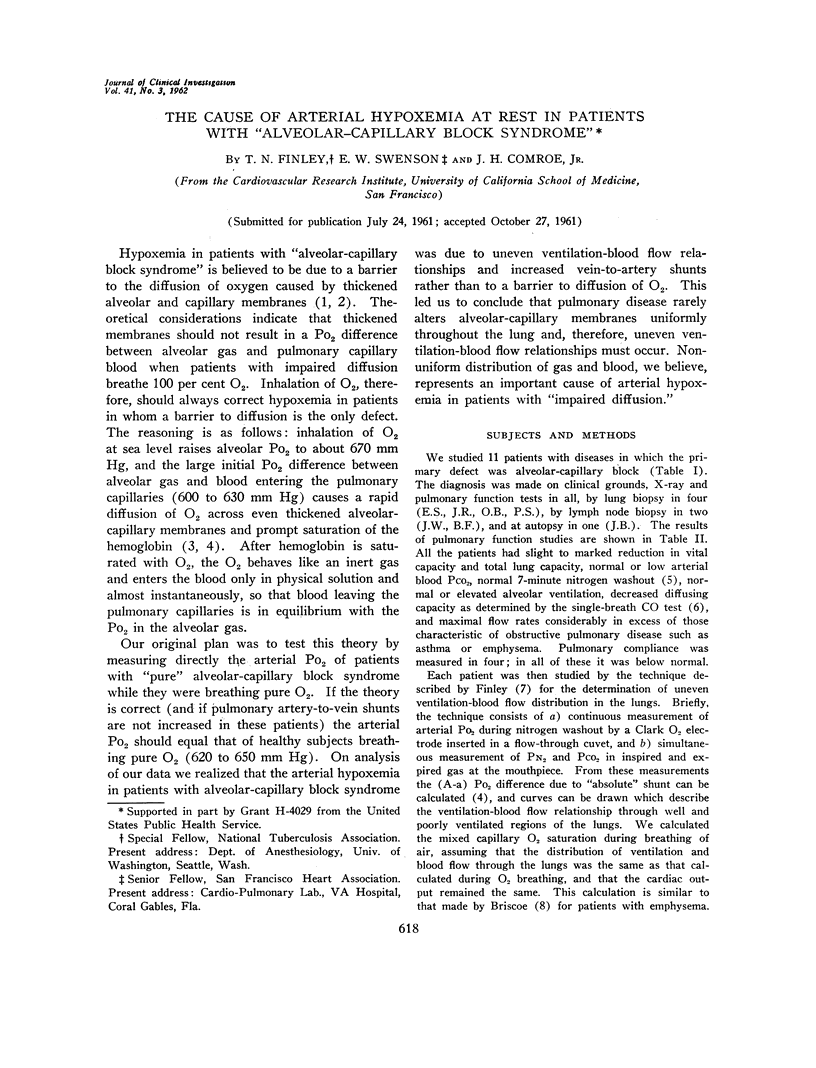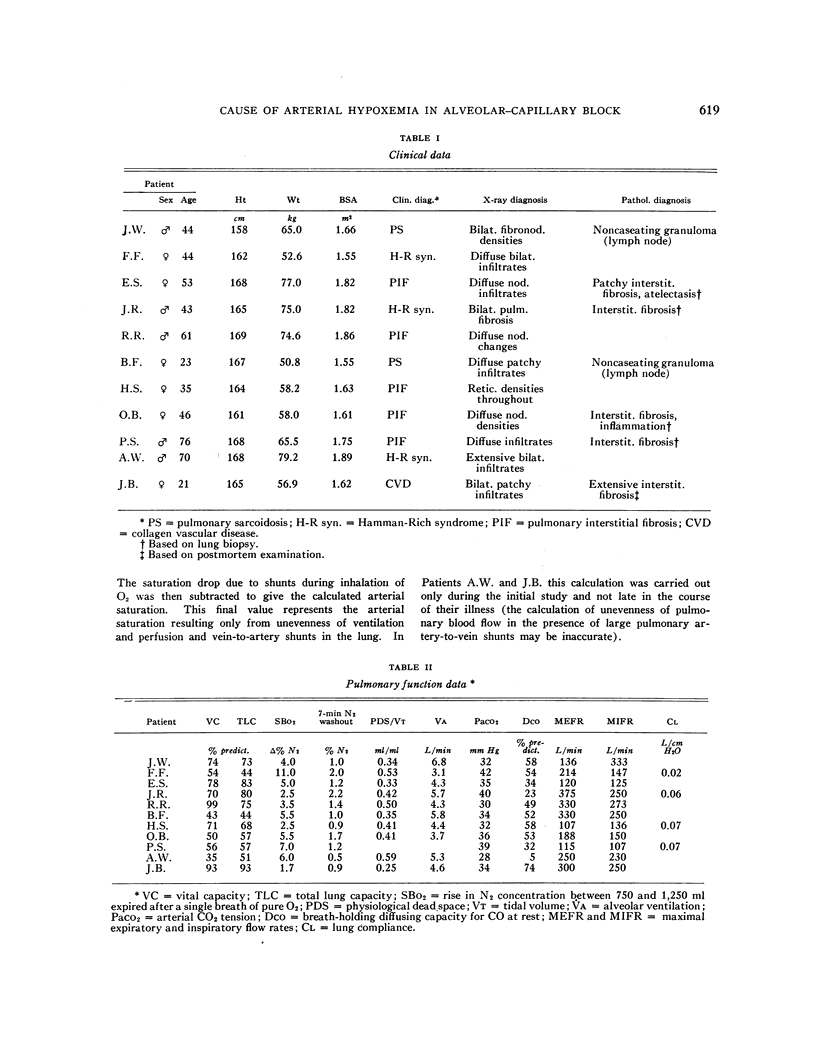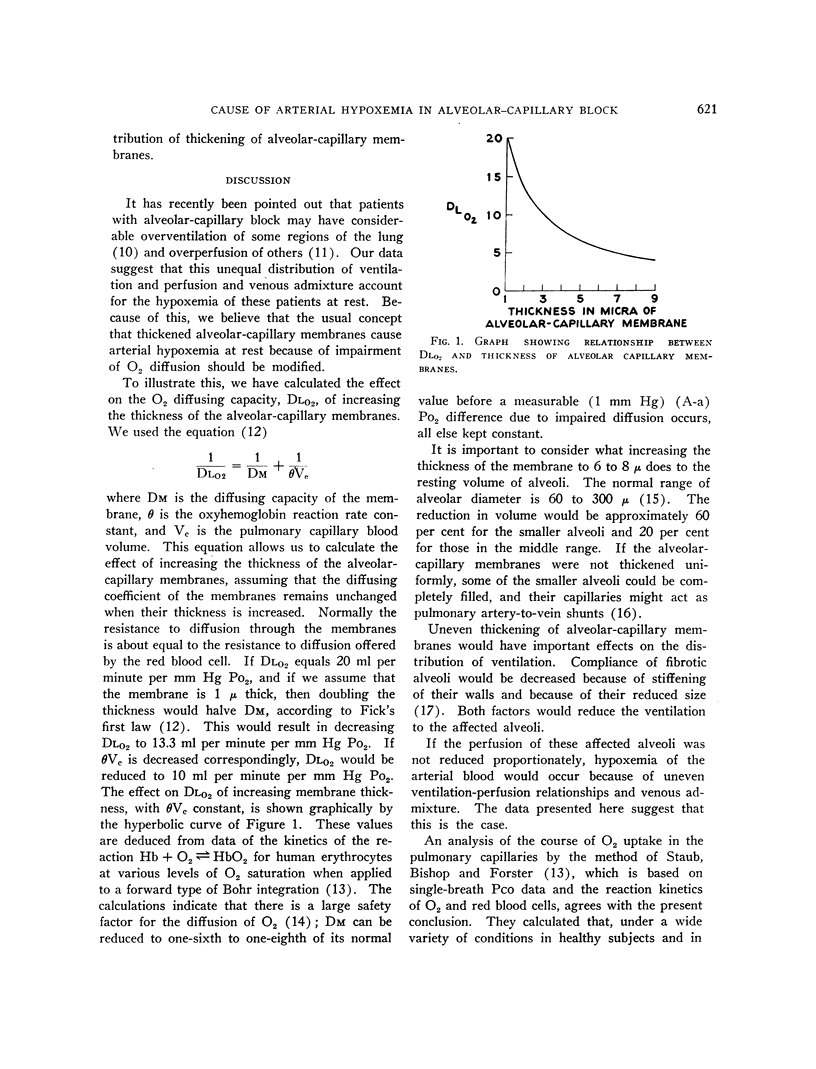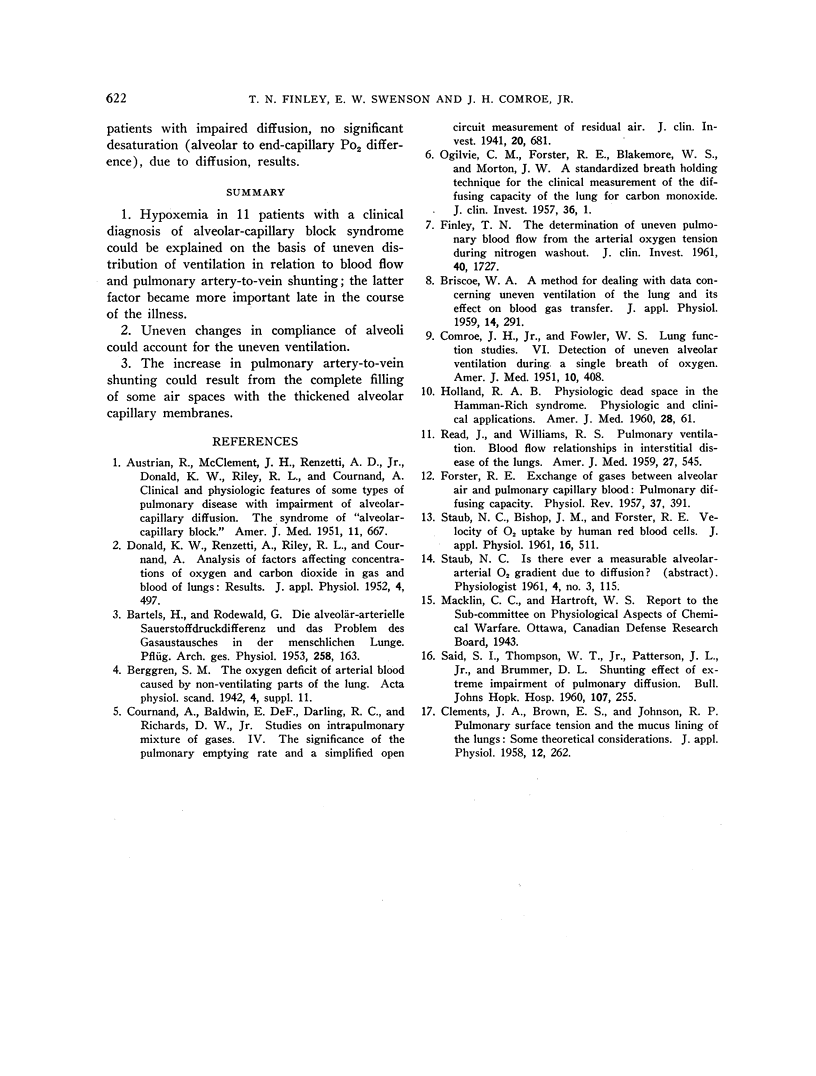Full text
PDF




Selected References
These references are in PubMed. This may not be the complete list of references from this article.
- AUSTRIAN R., McCLEMENT J. H., RENZETTI A. D., Jr, DONALD K. W., RILEY R. L., COURNAND A. Clinical and physiologic features of some types of pulmonary diseases with impairment of alveolar-capillary diffusion; the syndrome of "alveolar-capillary block". Am J Med. 1951 Dec;11(6):667–685. doi: 10.1016/0002-9343(51)90019-8. [DOI] [PubMed] [Google Scholar]
- BARTELS H., RODEWALD G. Die alveolär-arterielle Sauerstoffdruckdifferenz und das Problem des Gasaustausches in der menschlichen Lunge. Pflugers Arch. 1953;258(3):163–176. doi: 10.1007/BF00363457. [DOI] [PubMed] [Google Scholar]
- BLAKEMORE W. S., FORSTER R. E., MORTON J. W., OGILVIE C. M. A standardized breath holding technique for the clinical measurement of the diffusing capacity of the lung for carbon monoxide. J Clin Invest. 1957 Jan;36(1 Pt 1):1–17. doi: 10.1172/JCI103402. [DOI] [PMC free article] [PubMed] [Google Scholar]
- BRISCOE W. A. A method for dealing with data concerning uneven ventilation of the lung and its effects on blood gas transfer. J Appl Physiol. 1959 May;14(3):291–298. doi: 10.1152/jappl.1959.14.3.291. [DOI] [PubMed] [Google Scholar]
- CLEMENTS J. A., BROWN E. S., JOHNSON R. P. Pulmonary surface tension and the mucus lining of the lungs: some theoretical considerations. J Appl Physiol. 1958 Mar;12(2):262–268. doi: 10.1152/jappl.1958.12.2.262. [DOI] [PubMed] [Google Scholar]
- COMROE J. H., Jr, FOWLER W. S. Lung function studies. VI. Detection of uneven alveolar ventilation during a single breath of oxygen. Am J Med. 1951 Apr;10(4):408–413. doi: 10.1016/0002-9343(51)90285-9. [DOI] [PubMed] [Google Scholar]
- Cournand A., Baldwin E. D., Darling R. C., Richards D. W. STUDIES ON INTRAPULMONARY MIXTURE OF GASES. IV. THE SIGNIFICANCE OF THE PULMONARY EMPTYING RATE AND A SIMPLIFIED OPEN CIRCUIT MEASUREMENT OF RESIDUAL AIR. J Clin Invest. 1941 Nov;20(6):681–689. doi: 10.1172/JCI101261. [DOI] [PMC free article] [PubMed] [Google Scholar]
- DONALD K. W., RENZETTI A., RILEY R. L., COURNAND A. Analysis of factors affecting concentrations of oxygen and carbon dioxide in gas and blood of lungs; results. J Appl Physiol. 1952 Jan;4(7):497–525. doi: 10.1152/jappl.1952.4.7.497. [DOI] [PubMed] [Google Scholar]
- FINLEY T. N. The determination of uneven pulmonary blood flow from the arterial oxygen tension during nitrogen washout. J Clin Invest. 1961 Sep;40:1727–1734. doi: 10.1172/JCI104395. [DOI] [PMC free article] [PubMed] [Google Scholar]
- FORSTER R. E. Exchange of gases between alveolar air and pulmonary capillary blood: pulmonary diffusing capacity. Physiol Rev. 1957 Oct;37(4):391–452. doi: 10.1152/physrev.1957.37.4.391. [DOI] [PubMed] [Google Scholar]
- HOLLAND R. A. Physiologic dead space in the Hamman-Rich syndrome. Physiologic and clinical implications. Am J Med. 1960 Jan;28:61–68. doi: 10.1016/0002-9343(60)90223-0. [DOI] [PubMed] [Google Scholar]
- READ J., WILLIAMS R. S. Pulmonary ventilation; blood flow relationships in intersititial disease of the lungs. Am J Med. 1959 Oct;27:545–550. doi: 10.1016/0002-9343(59)90039-7. [DOI] [PubMed] [Google Scholar]
- SAID S. I., THOMPSON W. T., Jr, PATTERSON J. L., Jr, BRUMMER D. L. Shunting effect of extreme impairment of pulmonary diffusion. Bull Johns Hopkins Hosp. 1960 Nov;107:255–261. [PubMed] [Google Scholar]


